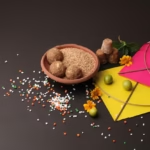10 Amazing Facts About Makar Sankranti: Why It’s Life-Changing
“Facts About Makar Sankranti That Will Change Your Perspective” Makar Sankranti, celebrated on January 14th or 15th, is one of India’s most vibrant festivals. It marks the Sun’s transition into Capricorn (Makar Rashi) and the beginning of Uttarayan (longer days and shorter nights). This festival is deeply rooted in gratitude, spirituality, and cultural unity.
In this article, we’ll explore everything about Makar Sankranti—its history, daily life impact, traditions, and why it holds significance in society.
All About Makar Sankranti: Facts About Makar Sankranti
It signifies the transition from winter to spring, symbolizing new beginnings, prosperity, and warmth. It is celebrated in different ways across India:
- North India: Bonfires and Lohri celebrations.
- South India: Pongal, a four-day festival.
- West India: Kite-flying and colorful festivities.
- East India: Poush Sankranti and Ganga Sagar Mela.
The festival is a blend of astrology, agriculture, and spirituality, making it a significant event for millions.
History and Origins of Makar Sankranti: Facts About Makar Sankranti
The festival’s origins trace back to:
- Solar Calendar: Unlike most Hindu festivals based on the lunar calendar, Makar Sankranti follows the solar calendar, ensuring it always falls on the same date.
- Mythology: The day marks Lord Vishnu’s victory over demons and the release of positive energy.
- Agrarian Society: It signifies the harvest season and the hard work of farmers.
10 Amazing Facts About Makar Sankranti: Facts About Makar Sankranti
- First Festival of the Year
Makar Sankranti is one of the first major festivals celebrated in the new year, symbolizing renewal and hope. - Uttarayan: The Sun’s Journey
The Sun’s northward movement (Uttarayan) begins, considered an auspicious time for spiritual practices. - The Holy Dip
Millions take ritual baths in sacred rivers like the Ganga and Yamuna to cleanse their souls. - Kite-Flying Tradition
In Gujarat and Rajasthan, the skies are adorned with colorful kites, symbolizing freedom and joy. - Tilgul Sweets
The exchange of sesame and jaggery sweets promotes goodwill and warmth during winter. - Pongal Feast in Tamil Nadu
Pongal, a sweet dish made from rice, milk, and jaggery, is a must-have in South Indian households. - Ganga Sagar Mela
In West Bengal, devotees gather at the confluence of the Ganga and the Bay of Bengal to offer prayers. - Celebration of Charity
Giving to the less fortunate is a key aspect, emphasizing compassion and unity. - Global Connection
Makar Sankranti isn’t confined to India—countries like Nepal and Thailand celebrate it under different names. - Scientific Relevance
The festival coincides with the winter solstice and the alignment of the Earth’s axis with the Sun.
Daily Life Impact of Makar Sankranti: Facts About Makar Sankranti
Makar Sankranti teaches invaluable lessons:
- Gratitude: Encourages appreciation for nature, harvest, and community.
- Mindfulness: The holy dip and spiritual activities promote introspection.
- Unity: The festival brings families and communities together.
- Charity: Acts of giving during Sankranti foster a sense of responsibility toward society.
FAQs About Makar Sankranti: Facts About Makar Sankranti
Q: Why is Makar Sankranti celebrated?
A: It marks the Sun’s transition into Capricorn, symbolizing new beginnings, positivity, and the end of winter.
Q: What makes kite-flying significant?
A: Kite-flying is a joyful activity that symbolizes freedom, aspirations, and the festive spirit.
Q: What are some traditional foods?
A: Popular dishes include tilgul (sesame sweets), pongal, khichdi, and laddoos made with jaggery and peanuts.
Significance and Observance: Facts About Makar Sankranti
Makar Sankranti is a festival of hope, gratitude, and renewal. Its observance includes:
- Spiritual Practices: Holy dips and prayers to cleanse the mind and soul.
- Cultural Activities: Kite-flying, rangoli designs, and folk music.
- Acts of Charity: Sharing food and clothes with the underprivileged.
Key Takeaways: Facts About Makar Sankranti
- Positive Energy: The Sun’s transition brings optimism and prosperity.
- Eco-Friendly Festivities: Many communities are adopting sustainable practices during celebrations.
- Global Inspiration: The values of Makar Sankranti—gratitude, unity, and mindfulness—are universal.
Wishing Your Loved Ones: Facts About Makar Sankranti
“May this Makar Sankranti fill your life with joy, warmth, and prosperity. Let the Sun’s radiance inspire you to embrace positivity and new beginnings. Happy Makar Sankranti!”
Why Makar Sankranti Matters to Society: Facts About Makar Sankranti
- Unity in Diversity: It unites India’s diverse cultures in celebration.
- Promotes Gratitude: Reminds us to thank nature, farmers, and the community.
- Spiritual Growth: Encourages acts of charity, reflection, and mindfulness.
Conclusion: Facts About Makar Sankranti
Makar Sankranti is more than a festival—it’s a way of life. From cultural traditions to spiritual practices, it teaches us the importance of gratitude, unity, and renewal. As we celebrate this auspicious occasion, let’s embrace its timeless lessons and make our lives brighter, kinder, and more meaningful.
Celebrate Makar Sankranti this year with love, joy, and compassion!










